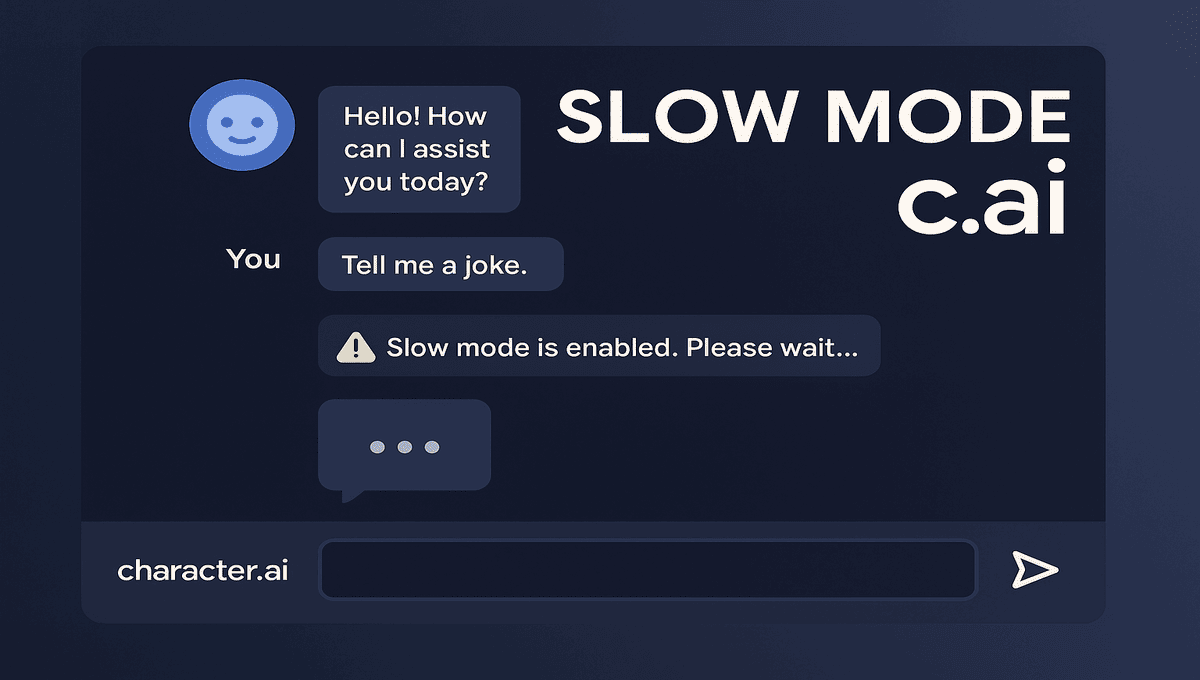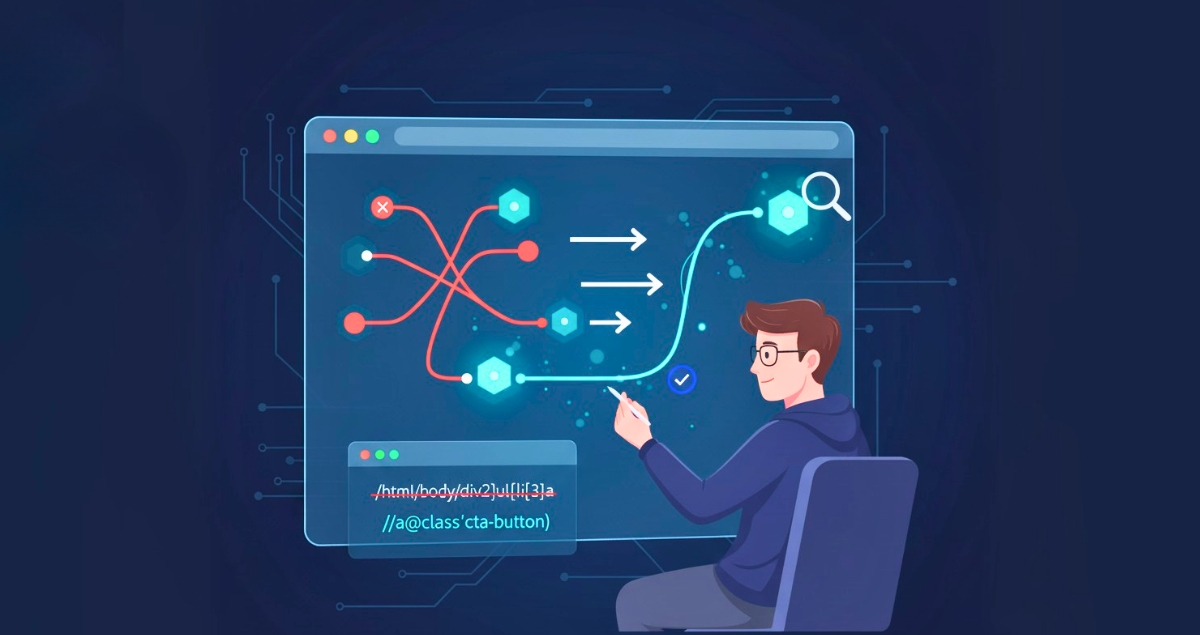Introduction: Why Slow Mode c.ai Is Gaining Attention
The world of AI chat is evolving fast, but with innovation comes the need for control. Whether you're an AI hobbyist, a chatbot developer, or a roleplayer on Character.AI (c.ai), you've probably encountered the term slow mode c.ai. But what does it really mean? Why is it relevant in 2025? How does it affect user interaction?In this detailed, human-centric guide, we’ll break down everything you need to know about slow mode c.ai, how it enhances user experience, and why controlling chat flow is crucial in AI interaction. We’ll also explore tips, technical implications, best practices, and how to navigate this feature efficiently.
What Is Slow Mode c.ai?
Definition and Core Purpose
Slow mode c.ai refers to a feature on Character.AI (commonly abbreviated as c.ai), where a delay is intentionally introduced between user inputs and AI-generated responses. The purpose? To enhance realism, prevent server overload, reduce spam, and simulate more natural conversation pacing.
Why It Matters
- Helps with throttling during high server load times.
- Prevents abuse or flooding in public AI conversations.
- Enhances realism by mimicking human-like pause or typing delays.
Whether you’re roleplaying, experimenting with AI dialogues, or just exploring, slow mode c.ai can significantly affect the user experience.
How Slow Mode Works on c.ai
Technical Mechanism Behind Slow Mode c.ai
Slow mode c.ai is implemented using rate-limiting parameters on the back-end of Character.AI. Essentially, users must wait a few seconds between messages. Depending on the server load or the room’s setting (for multiplayer chats), the time interval may vary between 5 to 30 seconds.
Factors That Trigger Slow Mode
- Server congestion or scheduled maintenance
- Abnormal user activity (e.g., too many messages in a short span)
- Custom chat room configurations
- Spam prevention measures
Benefits of Slow Mode c.ai
1. Enhanced Chat Experience
By simulating natural pauses, slow mode c.ai encourages more thoughtful responses from users. It mirrors the natural rhythm of conversation rather than rapid, robotic message exchanges.
2. Reduced Spam and Abuse
This is a built-in safeguard against message spam, which is crucial for moderated or public AI chat rooms. It minimizes the chance of trolls flooding chats or overloading the AI.
3. Server Optimization
By reducing message frequency, the AI model can operate more efficiently, especially during high traffic periods.
4. Encourages Reflective Roleplay
In roleplay settings, users often need time to craft immersive, creative responses. Slow mode c.ai promotes quality over quantity.
Drawbacks and Frustrations Users Face
1. Interrupts Flow of Conversation
For fast-paced users, slow mode can feel limiting. It disrupts real-time dialogue and can frustrate those expecting snappy replies.
2. Perceived Lag
Many users mistake slow mode c.ai for lag or glitches, leading to confusion and dissatisfaction.
3. Lack of Customization
At present, most users cannot adjust the timer. The slow mode is server-side enforced, leading to a one-size-fits-all approach.
How to Bypass or Minimize the Impact of Slow Mode
1. Use Private Chats
In private interactions, slow mode c.ai is less aggressively applied. It’s a great workaround for those preferring faster, uninterrupted conversation.
2. Avoid Peak Hours
AI server load plays a role. Using the platform during off-peak hours (late nights or early mornings) can reduce instances of slow mode being enforced.
3. Reduce Message Length
Longer messages can increase processing time. Shortening your inputs may result in quicker responses under slow mode c.ai.
Expert Tips for Mastering Slow Mode c.ai
Make the Most of Your Waiting Time
- Reflect on your next message.
- Read through the AI’s past responses.
- Edit your inputs for clarity and depth.
Enhance Creative Writing in Roleplays
Use slow mode as a tool to deepen storytelling. Enrich dialogue, improve scene-setting, and build character nuance in the waiting interval.
Communicate Expectations
If chatting with others, set clear expectations about pace. Inform them if slow mode c.ai is active to prevent misunderstandings.
Community Insights: What Users Are Saying
We scoured forums like Reddit, Discord, and C.AI’s official channels to gather opinions:
“Slow mode c.ai is annoying when you’re brainstorming, but great when you’re trying to focus on quality responses.”
— @LunaByte on Reddit“It’s a double-edged sword. It saves me from impulse messages but sometimes feels too rigid.”
— @KryptonKhaos on Discord
This divide reflects a need for optional customization—something many users are hoping for in future updates.
How Developers Can Work With Slow Mode
For those integrating c.ai’s API or building bots for simulation:
Use Queue Systems
Implement a message queue to avoid triggering rate limits.
Respect Delay Parameters
Design your tools to automatically detect and wait during slow mode c.ai.
Provide UI Feedback
Alert users when slow mode is active so they aren’t confused by delayed responses.
Slow Mode c.ai and the Future of Conversational AI
As we move toward more dynamic AI-human interactions, features like slow mode c.ai will play a vital role in regulating flow, ensuring system integrity, and balancing realism with performance.
Expect future enhancements to include:
- Customizable timer settings
- User-based slow mode profiles
- Adaptive delay depending on input style or behavior
These upgrades would transform slow mode c.ai from a limiting feature to an empowering one.
Conclusion: Embrace the Pause
While it may seem frustrating at first, slow mode c.ai offers immense value—enhancing realism, reducing spam, and optimizing performance. Instead of fighting the delay, savvy users learn to use it as a moment to reflect, refine, and recharge their AI interactions.
By mastering slow mode c.ai, you’re not just adjusting to a technical feature—you’re aligning with the future of thoughtful, controlled, and immersive AI communication.
Also Read: Pyntekvister: The Ultimate 2025 Decorative Guide for Natural Elegance







